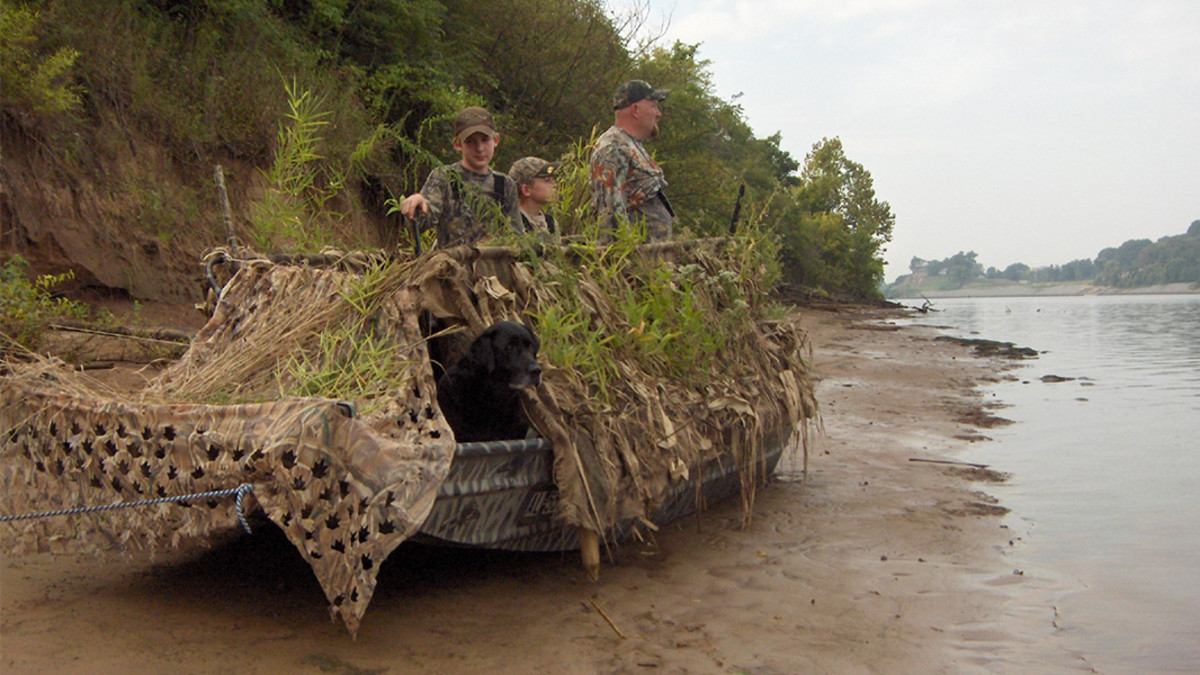
Camouflage clothing is essential for waterfowl hunting unless you’ve got a good blind that keeps you entirely hidden.
Wear clothes and waders that match the vegetation or ground cover where you hunt. But camouflage can’t work miracles, you also need to use employ some tactics of stealth when trying to get wary ducks or geese into shotgun range. Use a backdrop when you can, such as a large tree trunk. Keep a low profile at all times, except when you rise to shoot. Avoid nylon and acrylic clothes that have a shine to them.
Keep your face low and covered with a mask or face paint when watching circling birds. Check your hunting partners to make sure they aren’t making clothing mistakes. If your buddy is wearing a reversible hunting jacket with hunter’s orange on the inside, make sure none of the orange is showing around the collar or cuffs. Avoid horizontal lines. A set of horizontally oriented shoulders in a stand of vertical cattails can easily give you away.
Blinds
Waterfowl “blinds” come in myriad forms, from simple painter’s suits for field hunting in the snow to expensive and elaborate layout boats for hunting diver ducks on vast ocean bays. Here are a handful of options to consider when trying to vanish from the prying eyes of waterfowl.
- Layout blinds are fantastic for field hunters. These allow you to lie down and hide in a field that provides little or no natural cover. Commercially produced versions are quite nice and come in a variety of camouflage patterns ranging from corn stubble to pure white. Some layout blinds are even made to look like gigantic geese. For the waterfowler on a budget, you can make do with less expensive materials. Try laying burlap sacks over your body to mimic dirt, or use a net draped with corn stalks to mimic corn stubble. A white bed sheet can work well in snowy conditions.
- Pit blinds serve the same purpose as layout blinds; to hide you the best in a landscape offering little or no cover. Here the recipe is simple: dig a hole and get in it. The larger the hole, the more comfortable it will be to hunt out of. If you want to get fancy, build a bench into the hole for sitting and a dugout shelf for spare shells and coffee. To improve your camouflage, take a section of wire fence big enough to cover the hole and weave dead grasses and sticks into it. Once inside, use it as a lid and fling it open when the birds are close.
- Coverall suits are simple and often quite effective. Since you’re wearing your “blind,” moving it is as easy as standing up and walking away. Ghillie suits are great when trying to hide in the low brush. Painter’s suits work well for snow camo. Simple Carhart coveralls are often adequate for hiding on bare dirt.
- Some variation of the brush blind is probably the most common way to conceal oneself from waterfowl. For the simplest approach, start with a framework of logs and sticks and then fill in the gaps with nearby vegetation such as brush, grass, cornstalks, cattails, leaves, etc. Another method is to pound in four chest-high stakes and then wrap the stakes in hog-wire fencing. Weave the fencing with vegetation. When hunting soggy areas, put down a piece of plywood for a floor.
- Boats can be turned into blinds by covering them with textured camouflage covers or brushing them out with natural materials woven into netting. You can also get manufactured boat coverings with doors that swing open for fast shooting.





Conversation